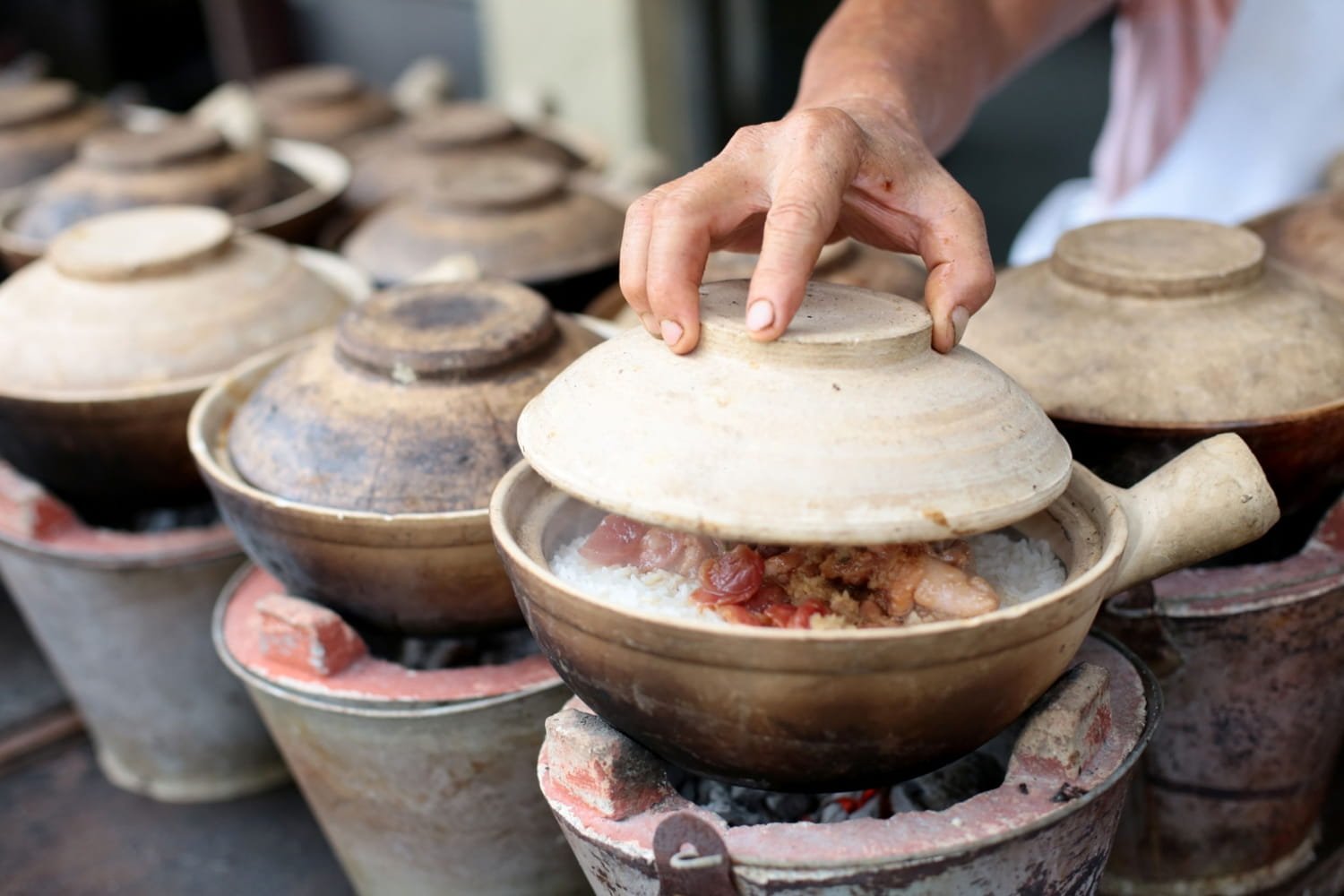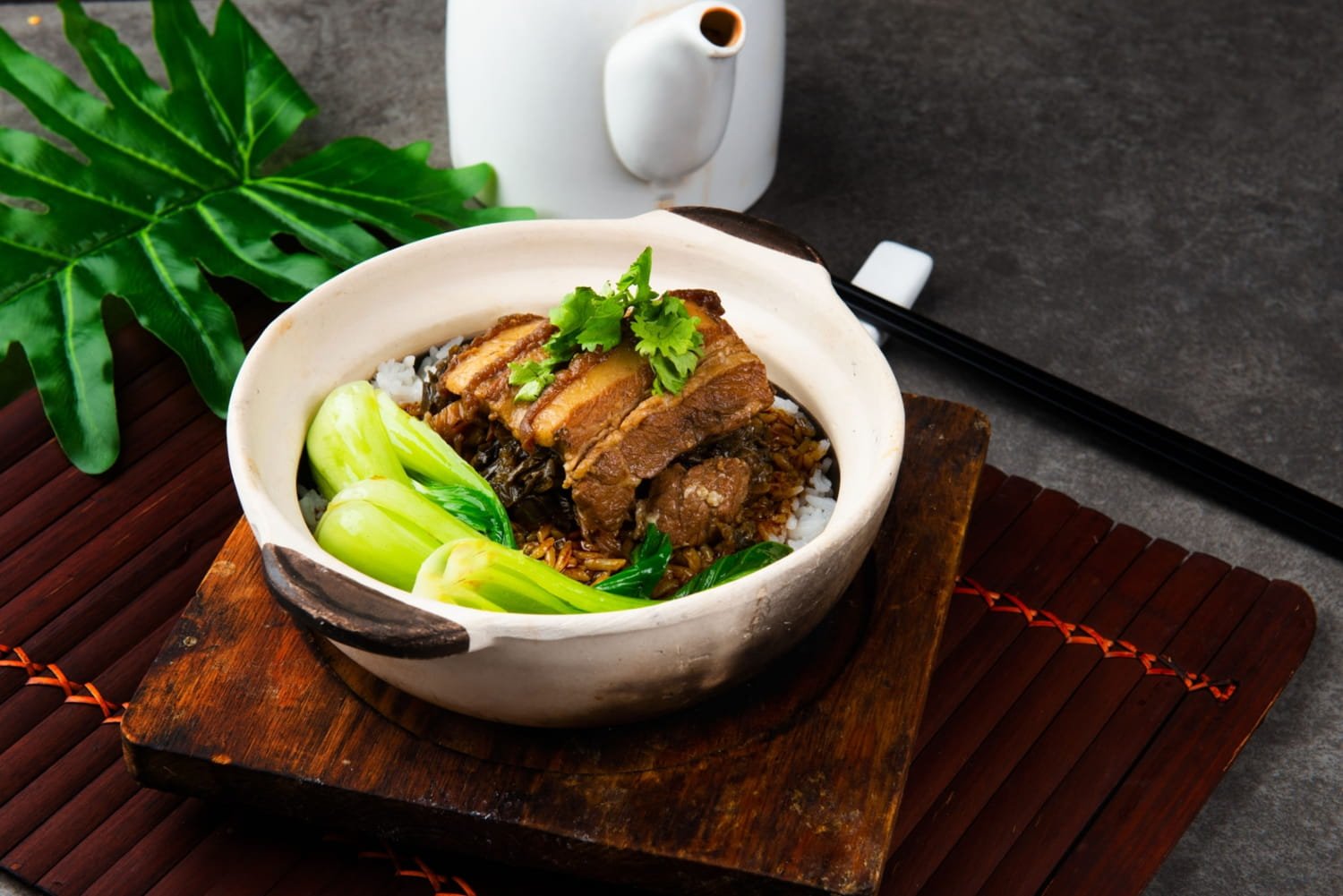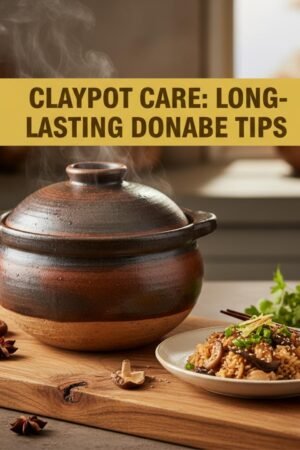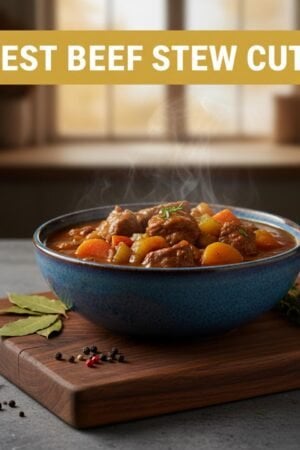There are disadvantages of cooking in clay pots but at the same time, there are advantages, too. This is why many people still consider cooking in clay pots.
Clay cookware is basically crafted from earthenware. This means that it contains natural materials that add to their health benefits. Today, we will cover the advantages of cooking in clay pots, the disadvantages, safety of using clay pots, cleaning tips, and the different types of clay pots to choose from. Let’s get started.
Advantages Of Cooking In Clay Pots
Clay is a material that does not interact with food. And in case it does affect food in some way, this material contains essential nutrients such as calcium and magnesium. Hence, it is not at all toxic unlike the case with metal cookware.

Thus, there are a number of advantages to cooking in clay pots such as the following:
1. Flavor
It is guaranteed that when you cook in a clay pot, the food tastes better than when you cook in other types of pans and pots. This is because of the moisture retention capability of a clay pot. As a result, food becomes more tender, fresher, and juicier.
Additionally, the moisture content in food allows to combine the seasonings and spices. This is why the flavor profile is richer and deeper, which also incorporates a special, unique touch to the overall taste.
2. Food pH Balance
Another good thing about cooking in clay pots is that the material contains alkaline properties. What it does is it neutralizes the food’s pH balance as clay interacts with the acidity content of the food being cooked in it.
For example, tomatoes and other acidic foods will obtain a natural sweetness. This is why it tastes better and the acidity is reduced.
3. Retains Food’s Nutrients
Next benefit of cooking in clay pots is the nutrient profile in food. Since clay pots are capable of retaining vapor and steam, this helps to keep the nutrients intact. You also don’t need to add in more water or oil as you cook. Thus, the flavor is not diluted, as well.
4. Heat Retention
One impressive thing about clay is its inability to conduct heat very well. This is why there is very little risk of burning food when you cook it in clay. You can even cook food under very high heat or pressure and not run the risk of burning it.
5. Healthier Cooking
When you cook in clay, you don’t have to add a huge amount of oil. You can even cook with ease and not have to worry about food sticking to the bottom a lot because of the naturally non-stick feature of clay.
Hence, cooking with less oil also helps reduce bad cholesterol. It is easier to follow an oil-free or reduced oil diet when you cook in clay – another health benefit you can get from clay pots.
6. Even Cooking
As we have mentioned earlier, clay is not exactly the best conductor of heat. There is very little chance of burning food when you cook in this type of pot. As clay allows moisture and heat to circulate inside in an even manner, your food cooks evenly. No burn spots or hot spots to worry about!
On the other hand, there is a higher risk of burning food when cooked in stainless steel or metal pots. This is why not only do you need to add more oil to prevent food from sticking to these materials, but the chance of burning your meal is higher, too.
7. Eco Friendly
And lastly, clay is a natural material that is eco-friendly. It is non-toxic and inert, which means you are not hurting the environment by using this type of pot.
Disadvantages Of Cooking In Clay Pots

Although clay pots have many benefits for the health, the environment, and for your own convenience, there are disadvantages that come with using this type of cookware. Here they are:
1. Risk Of Cracks
When cooking at high temperature, your clay pot may crack. This is possible to happen when there is a sudden shift in the temperature, causing the pot to crack as you cook. Hence, you need to watch the temperature and make sure it is relatively even the whole time. Start with a low heat and increase gradually as your food cooks.
In addition, you should avoid using hard materials such as metal spoons or ladles when you are stirring your food in the pot. Wooden spatula is best as it is not likely to cause the pot to crack.
2. Porous Material
Clay is porous, so you need to be careful when washing it with soap. For instance, soap and the fragrance of soap can get into the clay, which may then leach into your food the next time you cook. It is better to wash your pot with hot water and a brush – and we will cover this more in the next section.
3. Pricey
It is also worth noting that clay pots tend to be expensive. In fact, they are pricier than cookware made of metal cast iron. But at the same time, you can expect numerous health benefits from using clay pots, which is why the benefits outweigh the limitations.
Types Of Claypots
You can choose from different types of clay pots out there. There are glazed and unglazed ones, as well as those with other distinguishing features.
Stoneware

This type of clay is typically fired between temperatures of 2100 up to 2300 degrees Fahrenheit. It is often used in making cookware and dinnerware, and there is minimal impurities in stoneware, which is why it is not very porous unlike the other types.
Earthenware

These pots are crafted from impure types of clay, which is why you can see small particles of sand and rocks. The clay used is obtained from streams, where the material has settled and produced clay deposits. Moreover, the material needs thick glazing because it is quite porous.
Porcelain

Lastly, we have porcelain. This is crafted from China clay or pure kaolin. High temperatures are used to harden this material, which can go up to 2550 degrees Fahrenheit. Although it is a hard type of clay, it can break easily. However, it is quite smooth, shiny and with less impurities, so there is no need to glaze it.
Is It Safe To Cook In Clay Pots
The short answer to this question is yes. You can cook in clay pots with complete peace of mind because of how safe it is.
In fact, there are numerous health benefits due to the inherent nutritive component of this material while not requiring you to add more oil each time you cook.
Since the material is alkaline, you can expect it to naturally neutralize the food’s pH level, offering a natural detox benefit and providing vitamins and minerals.

How to Clean Clay Pots For Cooking
With all of these things said about clay pots, let us talk about care tips. Clay pots are porous, which means the smell of soap can easily get into the material and leach into your food.
This is why you should observe certain steps in cleaning it such as the following:
1. Soak the pot and the lid in water if the material is unglazed. Do this for about 15 minutes to help with the steaming as you cook. Dry the pot with a clean cloth and add in the ingredients inside.
2. When cleaning the pot, avoid detergent or soap that can leach into the food. Use boiling hot water and a brush with stiff bristles to clean your clay pot. You can also use salt or baking soda as an extra cleansing agent with your scrubbing sponge.
Baking soda does not only clean the pot but it also freshens it, especially when you have just cooked pungent foods in your clay pot.
Conclusion
Overall, clay pots are healthy to cook your food in. These are sturdy, natural, and eco-friendly options for cooking, which is why it may be worth looking into these pots. Just make sure you apply these care techniques and choose the right type of clay pot that suits your needs and budget.






